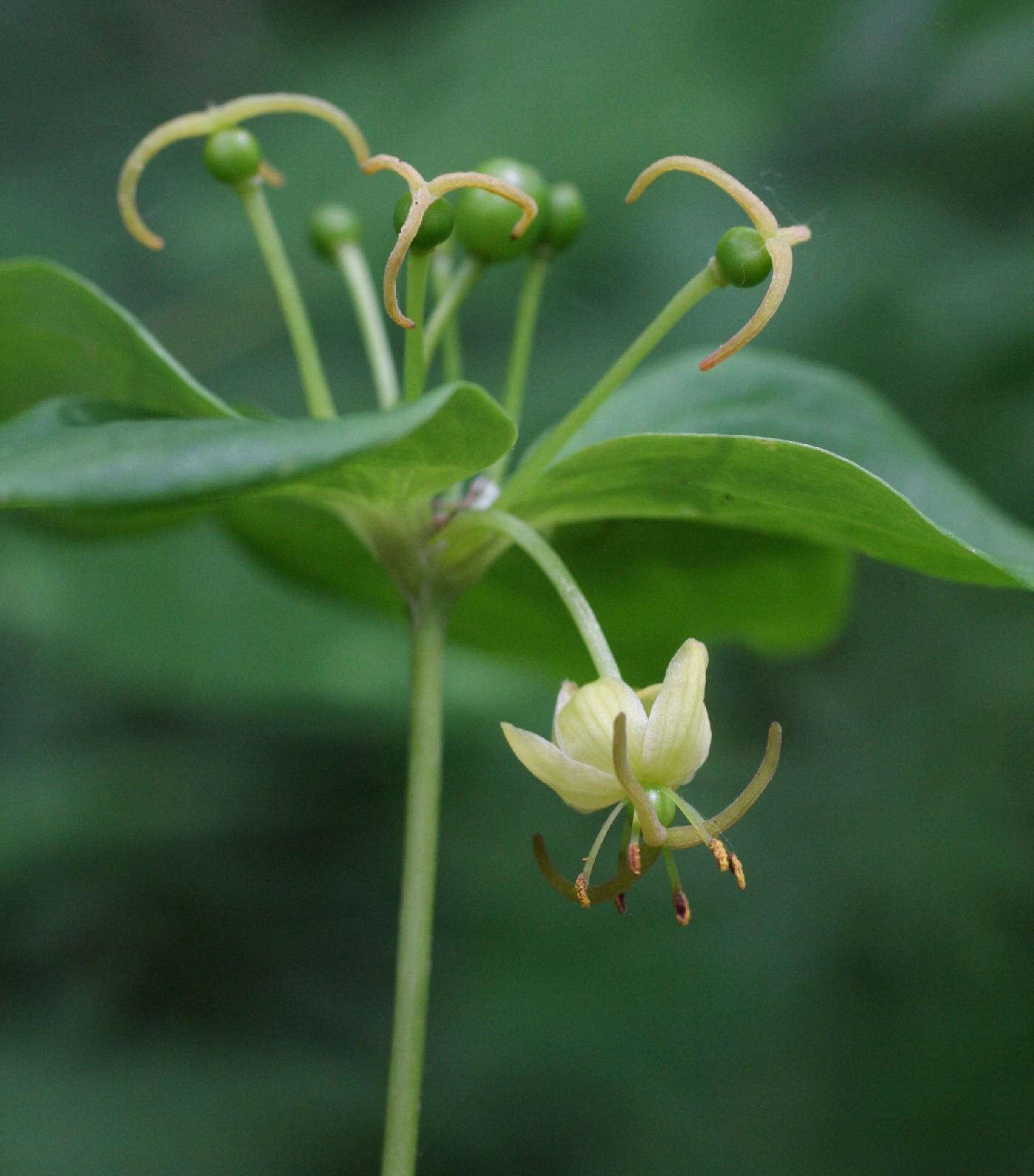
|
Family: Liliaceae |
Herbs, perennial, from tapered, white, tuberlike, horizontal rhizomes. Stems simple, slender. Leaves in 2 whorls; proximal blades oblong-oblanceolate, base attenuate, margins entire, apex acuminate; distal blades ovate, rounded at base, apex acuminate. Inflorescences terminal, umbellate, (2-)3-9-flowered, sessile. Flowers: tepals caducous, 6, similar, recurved, distinct; stamens 6; anthers versatile, oblong, extrorse; ovary superior, 3-locular; styles 3, recurved, distinct to base, often purple; pedicel declined or spreading in flower, erect in fruit. Fruits baccate, dark purple to black, globose. Seeds few, shiny brown, subglobose. x = 7. Medeola was removed from its long association with Trillium and Paris (tribe Parideae) when A. L. Takhtajan (1987, 1997) created the monotypic Medeolaceae, placing it next to a strictly defined Liliaceae. M. N. Tamura (1998c) included Medeola and Clintonia in the tribe Medeoloideae within a narrowly defined Liliaceae. The association of Medeola and Clintonia is supported by molecular analysis (K. Hayashi et al. 1998, 2001; T. B. Patterson and T. J. Givnish 1998) as well as morphology (R. Y. Berg 1962; M. Takahashi 1984; F. H. Utech 1978e), embryology (R. Y. Berg 1962b), and cytology (R. M. Stewart and R. Bamford 1942; M. N. Tamura 1995).
Tep 6, essentially similar, separate, recurved; stamens hypogynous; filaments slender; anthers oblong, extrorse, versatile; ovary ovoid, with 3 ovules per locule; styles 3, separate almost to the base, recurved-spreading, stigmatic along the inner side; fr a globose few-seeded berry; herb from a thick, tuber-like horizontal rhizome, the slender stem with 2 whorls of lvs and a sessile, few-fld, terminal umbel of greenish-yellow fls. Monotypic. Gleason, Henry A. & Cronquist, Arthur J. 1991. Manual of vascular plants of northeastern United States and adjacent Canada. lxxv + 910 pp. ©The New York Botanical Garden. All rights reserved. Used by permission. |
This project was made possible in part by the Institute of Museum and Library Services [MG-70-19-0057-19].
Powered by Symbiota



